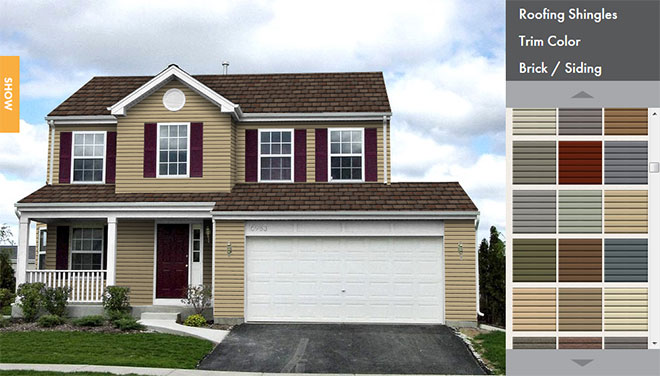Roofing Company MN | Minnesota Roofing Contractor
Is it Time for a New Roof?
- Curling Shingles: Curling shingles allow rain and snow to get into your property. These shingles may also be damaged by wind easily.
- Missing Granules & Exposed Shingle Mat: Granules are there to protect the asphalt from UV rays and water. If you view worn areas on your shingles your roof is deteriorating. Many times you will discover granule accumulation by your gutter downspouts.
- Broken or Missing Shingles: If they are not on the roof they are not doing their job!.
- Cracked Shingles: Many leaks arise from this condition. Nails that have come loose may contribute to this.
- Interior Water Spots: Notice any interior water spots on your ceiling?
Life Of Roof Quality: Shingle installation can last between 10-25 years. If you notice many properties in your area getting new roofs it is a good idea to have yours evaluated.
A roof system’s performance is affected by numerous factors. Knowing about the following will help you make informed roof system buying decisions:
- Sun: Heat and ultraviolet rays cause roofing materials to deteriorate over time. Deterioration can occur faster on the sides facing west or south.
- Rain: When water gets underneath shingles, shakes or other roofing materials, it can work its way to the roof deck and cause the roof structure to rot. Extra moisture encourages mildew and rot elsewhere in a house, including walls, ceilings, insulation and electrical systems.
- Wind: High winds can lift shingles’ edges (or other roofing materials) and force water and debris underneath them. Extremely high winds can cause extensive damage.
- Snow and ice: Melting snow often refreezes at a roof’s overhang where the surface is cooler, forming an ice dam. This blocks proper drainage into the gutter. Water backs up under the shingles (or other roofing materials) and seeps into the interior. During the early melt stages, gutters and downspouts can be the first to fill with ice and be damaged beyond repair or even torn off a house or building.
- Condensation: Condensation can result from the buildup of relatively warm, moisture-laden air. Moisture in a poorly ventilated attic promotes decay of wood sheathing and rafters, possibly destroying a roof structure. Sufficient attic ventilation can be achieved by installing larger or additional vents and will help alleviate problems because the attic air temperature will be closer to the outside air temperature.
- Moss and algae: Moss can grow on moist wood shingles and shakes. Once it grows, moss holds even more moisture to a roof system’s surface, causing rot. In addition, moss roots also can work their way into a wood deck and structure. Algae also grows in damp, shaded areas on wood or asphalt shingle roof systems. Besides creating a black-green stain, algae can retain moisture, causing rot and deterioration. Trees and bushes should be trimmed away from homes and buildings to eliminate damp, shaded areas, and gutters should be kept clean to ensure good drainage.
- Trees and leaves: Tree branches touching a roof will scratch and gouge roofing materials when the branches are blown by the wind. Falling branches from overhanging trees can damage, or even puncture, shingles and other roofing materials. Leaves on a roof system’s surface retain moisture and cause rot, and leaves in the gutters block drainage.
- Missing or torn shingles: The key to a roof system’s effectiveness is complete protection. When shingles are missing or torn off, a roof structure and home or building interior are vulnerable to water damage and rot. The problem is likely to spread-nearby shingles also are ripped easily or blown away. Missing or torn shingles should be replaced as soon as possible.
- Shingle deterioration: When shingles are old and worn out, they curl, split and lose their waterproofing effectiveness. Weakened shingles easily are blown off, torn or lifted by wind gusts. The end result is structural rot and interior damage. A deteriorated roof system only gets worse with time-it should be replaced as soon as possible.
- Flashing deterioration: Many apparent roof leaks really are flashing leaks. Without good, tight flashings around chimneys, vents, skylights and wall/roof junctions, water can enter a home or building and cause damage to walls, ceilings, insulation and electrical systems. Flashings should be checked as part of a biannual roof inspection and gutter cleaning.
The price of a new roof system varies widely, depending on such things as the materials selected, contractor doing the work, home or building, location of the home or building, local labor rates and time of year. To get a good idea of price for your roof system, get three or four proposals from reputable contractors in your area. Keep in mind that price is only one factor, and it must be balanced with the quality of the materials and workmanship.
For each roofing material, there are different grades and corresponding prices. There also are a variety of styles and shapes. You need to look at the full product range and make a choice based on your budget and needs.
How can I determine my annual roofing cost?
When considering your roofing options, the following formula may help:
Total Cost (Materials and Labor) ÷ Life Expectancy of Roof System (in years) = Annual Roofing Cost
GAF Master Elite Residential Roofing Contractor
Within the roofing profession, there are different levels of expertise and craftsmanship. Insist on a contractor who is committed to quality work. A factory trained and certified GAF Master Elite residential roofing contractor, is your best assurance of quality workmanship. They offer warranties backed by GAF, America’s largest roofing manufacturer. GAF’s quality roofing products have been designed to work together for superior, long-term protection, and have been proven on literally millions of homes nationwide. They even carry the prestigious Good Housekeeping Seal—your assurance of exceptional quality and performance!
Buying a new roof system is an important investment. Before you spend your money, spend time learning how to evaluate roofing contractors. You should insist on working with a professional Minnesota roofing contractor. Find out about which Roof System will best work for you.
Carefully read and understand any roofing warranty offered and watch for provisions that would void it. Keep a healthy skepticism about the lowest bid. If it sounds too good to be true, it probably is. Remember, price is only one criterion for selecting a roofing contractor. Professionalism and quality workmanship also should weigh heavily on your decision.


 Click Here
Click Here Click Here To Use
Click Here To Use